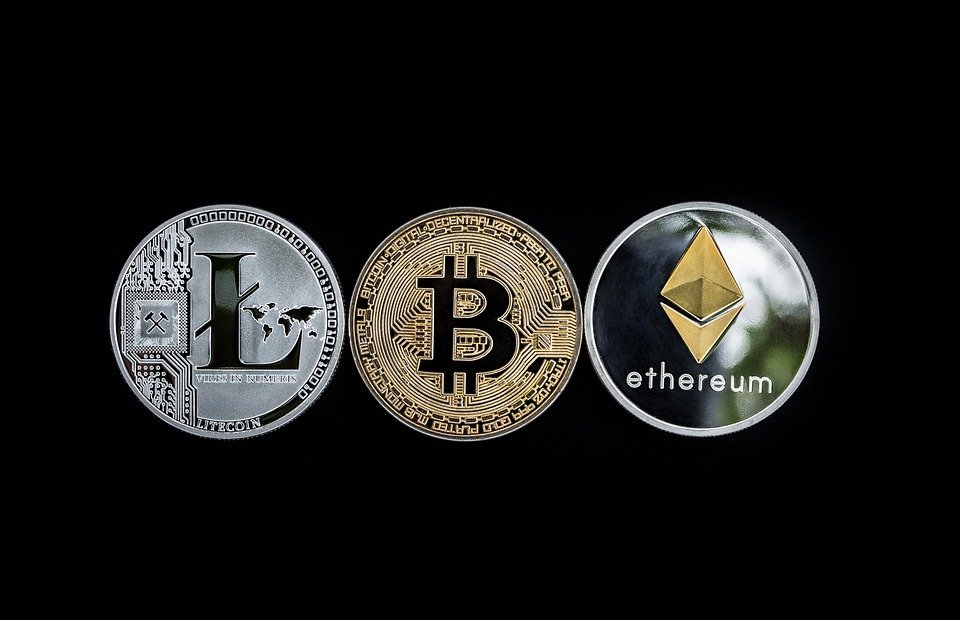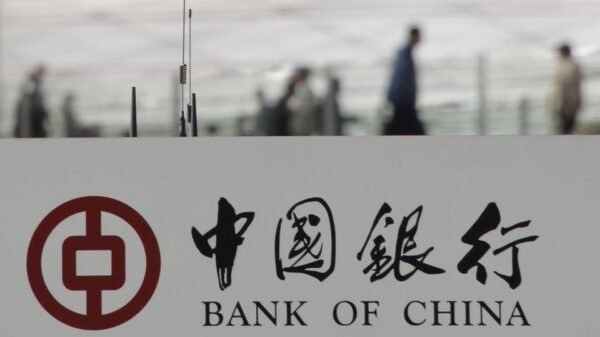How Blockchain Will Shape the Future of Green Finance
Discover how blockchain is revolutionizing green finance by increasing efficiency, transparency, and trust. Learn the benefits of using blockchain for green financing initiatives, and what the future holds for this innovative technology.
KEY TAKEAWAYS
- Blockchain technology can be used to facilitate green finance and help promote sustainable investments.
- By using blockchain technology, organizations can trace the origin and provenance of investments and determine their environmental impact.
- Blockchain technology can help create a more open and transparent market for green finance, allowing investors to make more informed decisions.
- Blockchain technology can be used to create digital tokens that represent green investments and help facilitate the transfer of value.
- Blockchain technology can help reduce the amount of paperwork and administrative costs associated with green investments.
- Blockchain technology can help ensure that green investments are accurately tracked and reported, increasing accountability.
As the world shifts towards renewable energy sources, green finance has become an increasingly important topic. Blockchain technology has the potential to play a major role in this shift, as it can provide transparency, security, and efficiency in green finance transactions. Blockchain has already revolutionized many aspects of the financial sector, and it is now being explored as a potential tool for improving the sustainability and scalability of green finance. This article will discuss the potential impact of blockchain on green finance, and how it can be used to further the goals of environmental sustainability. By leveraging the power of the blockchain, green finance projects can be more secure, transparent, and efficient. We will also explore the challenges and opportunities associated with using blockchain in green finance, as well as how it can be used to combat climate change. Finally, we will examine the potential implications of blockchain for green finance in the future.
The Role of Blockchain in Green Finance
- Streamlining of Transactions & Improved Security
Blockchain technology has the potential to revolutionize green finance by streamlining transactions and increasing the security of investments. By leveraging the distributed ledger capabilities of blockchain, green finance transactions can be executed and tracked quickly and securely across multiple parties. This can enable the rapid and efficient settlement of green finance transactions and reduce the risk of fraud or data loss. Additionally, blockchain can enable the secure storage of data and provide digital identities for entities, which can further improve the security of transactions.
Verification of Green Assets
Blockchain can also be used to verify the authenticity of green assets and ensure that they are compliant with relevant environmental regulations. By creating immutable digital records that are stored on the blockchain, investors can have increased confidence in their investments. Furthermore, the blockchain can also be used to track the provenance of green assets, allowing investors to identify the source and verify that it is by the relevant regulations.
Increased Accessibility & Transparency
Blockchain technology can also be used to increase the accessibility and transparency of green finance. By providing a secure and immutable digital ledger of transactions, blockchain can enable greater access to green finance markets for retail investors. Additionally, the distributed ledger can help to increase transparency by providing an accurate and tamper-proof record of transactions. This can help to improve confidence in the green finance market and attract more investors.
Reducing Transaction Costs & Increasing Efficiency
Finally, blockchain technology can also be used to reduce transaction costs and increase the efficiency of green finance transactions. By streamlining the transactions and eliminating the need for third-party intermediaries, blockchain can reduce the costs associated with green finance investments. Additionally, blockchain can also help to reduce the time and effort required to execute green finance transactions, making them more efficient and cost-effective in the long run.
Overall, the use of blockchain technology in green finance has the potential to revolutionize the industry. By streamlining transactions, verifying green assets, increasing accessibility and transparency, and reducing transaction costs, blockchain can help to make green finance investments more secure, efficient, and cost-effective.
Real-World Scenarios
Blockchain technology is increasingly being used in green finance to create a more transparent and efficient system for financing renewable energy projects, offsetting carbon emissions, and promoting sustainable agriculture and fisheries.
- Renewable Energy Projects
The blockchain can be used to facilitate the financing of renewable energy projects. By using blockchain-based smart contracts, investors can be assured that their money is going to the right place and that their funds are being allocated to the project they intended. Smart contracts also allow for the automatic tracking of project progress and can provide real-time updates to investors. This helps to ensure that the project is on track and that the investor’s money is not at risk.
Financial Transparency
The blockchain provides a layer of financial transparency that is not available in traditional financing methods. By using the blockchain, investors can see exactly where their money is going and how it is being used. This helps ensure that the money is being used for the intended purpose, which can provide peace of mind to investors.
Automated Tracking
With blockchain-based smart contracts, investors can be sure that their money is being tracked at all times. This allows for real-time updates to investors, which can help them make informed decisions about their investments. Smart contracts also make it easier for investors to monitor the progress of the project and ensure that their money is not at risk.
- Offsetting Carbon Emissions
The blockchain can be used to facilitate the financing of carbon offset projects. By using blockchain-based smart contracts, investors can be assured that their money is going to the right place and that their funds are being allocated to the project they intended. Smart contracts also allow for the automatic tracking of project progress and can provide real-time updates to investors. This helps to ensure that the project is on track and that the investor’s money is not at risk.
Automated Tracking
With blockchain-based smart contracts, investorshttps://whizord.com/bitcoin-and-crypto-where-is-it-now/
can be sure that their money is being tracked at all times. This allows for real-time updates to investors, which can help them make informed decisions about their investments. Smart contracts also make it easier for investors to monitor the progress of the project and ensure that their money is not at risk.
Increased Efficiency
The use of blockchain technology in green finance can also help to increase the efficiency of carbon offset projects. By using the blockchain, investors can be sure that their money is going to the right place and that the project is being tracked in real-time. This can help to ensure that the project is completed on time and that the investor’s money is not at risk.
- Sustainable Agriculture & Forestry
The blockchain can also be used to facilitate the financing of sustainable agriculture and forestry projects. By using blockchain-based smart contracts, investors can be assured that their money is going to the right place and that their funds are being allocated to the project they intended. Smart contracts also allow for the automatic tracking of project progress and can provide real-time updates to investors. This helps to ensure that the project is on track and that the investor’s money is not at risk.
Real-Time Updates

Photo: Worldspectrum
The use of blockchain-based smart contracts allows for real-time updates to investors. This can help them make informed decisions about their investments and ensure that their money is being used for the intended purpose. Smart contracts also make it easier for investors to monitor the progress of the project and ensure that their money is not at risk.
Increased Efficiency
The use of blockchain technology in green finance can also help to increase the efficiency of sustainable agriculture and forestry projects. By using the blockchain, investors can be sure that their money is going to the right place and that the project is being tracked in real-time. This can help to ensure that the project is completed on time and that the investor’s money is not at risk.
- Sustainable Fisheries
The blockchain can also be used to facilitate the financing of sustainable fisheries projects. By using blockchain-based smart contracts, investors can be assured that their money is going to the right place and that their funds are being allocated to the project they intended. Smart contracts also allow for the automatic tracking of project progress and can provide real-time updates to investors. This helps to ensure that the project is on track and that the investor’s money is not at risk.
Real-Time Updates
The use of blockchain-based smart contracts allows for real-time updates to investors. This can help them make informed decisions about their investments and ensure that their money is being used for the intended purpose. Smart contracts also make it easier for investors to monitor the progress of the project and ensure that their money is not at risk.
Improved Traceability
The use of blockchain technology in green finance can also help improve traceability in sustainable fisheries projects. By using the blockchain, investors can be sure that their money is going to the right place and that the project is being tracked in real-time. This can help to ensure that the project is completed on time and that the investor’s money is not at risk.
Challenges
- Regulatory Hurdles
The application of blockchain in green finance is still in its early stages, and as such, it is facing considerable regulatory hurdles. While most countries have established regulatory frameworks governing financial institutions, they often lack the necessary guidance to properly regulate blockchain-based solutions. This lack of regulatory certainty can be a major obstacle to the widespread adoption of blockchain technology in green finance.
Furthermore, since blockchain-powered solutions are decentralized, they may not fall under the jurisdiction of any one nation or regulator. This makes it difficult to enforce any regulations or laws that may apply to blockchain-based solutions.
Regulatory Uncertainty
Regulatory uncertainty is a major challenge that must be addressed before blockchain can become a widely accepted technology in green finance. Without clear guidance from regulators, financial institutions may be reluctant to invest in blockchain-based solutions.
Cross-Border Jurisdiction
Another challenge is the ability of blockchain-based solutions to operate across borders. While this is a benefit in many ways, it also makes it difficult to enforce regulations and laws that may be applicable in different countries.
- Security Issues
Despite the promise of blockchain technology in green finance, there are also security concerns that must be addressed. Since blockchain-based solutions are decentralized, they are vulnerable to malicious attacks. This means that user data and financial transactions are at risk of being compromised.
H3: Data Protection
Data protection is a major security concern for blockchain-based solutions. As such, financial institutions must ensure that user data is properly encrypted and stored securely. This is especially important for solutions that involve sensitive user data, such as personal financial information.
Malicious Attacks
Malicious attacks are a major security concern for blockchain-based solutions. Since these solutions are decentralized, they are vulnerable to hackers who may attempt to steal user data or disrupt the network. As such, financial institutions must ensure that the necessary security measures are in place to protect against these attacks.
- Cost & Scalability
Cost and scalability are also major challenges that must be addressed before blockchain-based solutions can become widely accepted in green finance. Since blockchain networks require a large amount of computing power and energy, they can be costly to operate. Furthermore, blockchain networks are not easily scalable, and this can limit the number of transactions that can be processed.
Energy Consumption
The energy consumption of blockchain-based solutions is a major challenge that must be addressed. As blockchain networks require a large amount of computing power and energy, they can be costly to operate. This can make it difficult for financial institutions to invest in blockchain-based solutions, as the costs may outweigh the benefits.
Scalability
Another challenge is scalability. Blockchain networks are not easily scalable, and this can limit the number of transactions that can be processed. This can make it difficult for financial institutions to use blockchain-based solutions to handle large amounts of transactions.
Overall, while blockchain technology has the potential to revolutionize green finance, there are still several challenges that must be addressed before it can become widely accepted. Regulatory hurdles, security issues, and cost & scalability are all major challenges that must be addressed before blockchain can become a viable option for green finance.
Benefits of Blockchain in Green Finance
- Lower Cost of Capital
The use of blockchain in green finance has the potential to lower the cost of capital for investors and issuers. Blockchain technology provides greater efficiency and cost savings in the transaction process, as it eliminates the need for a third-party intermediary. This reduces the costs associated with verifying the transaction, such as legal fees, thus allowing investors to access capital at a lower cost. Additionally, the use of blockchain-based smart contracts can reduce the time required to execute financial transactions, resulting in quicker access to capital.
Automation of Transactions
Blockchain technology can be used to automate the execution of financial transactions. Smart contracts, which are self-executing computer programs, can be used to facilitate and enforce the terms of a financial transaction. This automation streamlines the process, saving time and money for both the issuer and the investor.
Increased Access to Green Investment Opportunities
The use of blockchain technology can increase access to green investment opportunities. By utilizing distributed ledger technology, investors can securely and efficiently access a variety of green investment opportunities. This increased access provides investors with more options to choose from, allowing them to make more informed decisions about their investments. Additionally, the use of blockchain-based smart contracts can make it easier to track the performance of green investments, providing investors with greater transparency.
- Increased Investment Opportunities
The use of blockchain technology in green finance can open up new investment opportunities for investors. Blockchain-based platforms can facilitate the disclosure and trading of green investments, such as green bonds, renewable energy certificates, and carbon credits. Additionally, the use of smart contracts can automate the execution of these transactions, making it easier for investors to access green investments.
Access to Global Markets
The use of blockchain technology can provide investors with access to global markets. By utilizing distributed ledger technology, investors can securely and efficiently access a variety of green investment opportunities in different countries. This increased access to global markets provides investors with more options to choose from, allowing them to make more informed decisions about their investments.
- Trust & Transparency
The use of blockchain technology can improve trust and transparency in green finance. By utilizing distributed ledger technology, investors can securely and efficiently access a variety of green investment opportunities. This increased transparency provides investors with greater confidence in the accuracy and integrity of their investments. Additionally, the use of smart contracts can automate the execution of these transactions, providing investors with greater assurance that their investments will be executed according to the terms of the contract.
Improved Regulatory Compliance
The use of blockchain technology can also improve regulatory compliance in green finance. By utilizing distributed ledger technology, regulators can more easily monitor and enforce compliance with green investment regulations. This increased transparency and oversight can help to ensure that green investments are managed responsibly and sustainably.
Final Thoughts
Blockchain technology has the potential to revolutionize green finance and provide a viable solution to the global climate crisis. By enabling transparent and secure transactions, blockchain can facilitate the tracking and trading of green assets while reducing the cost of capital and unlocking new sources of investment. Ultimately, if deployed properly, blockchain could be a powerful tool in the fight against climate change and ensure that green finance is accessible and sustainable in the long-term.
































































Comment Template